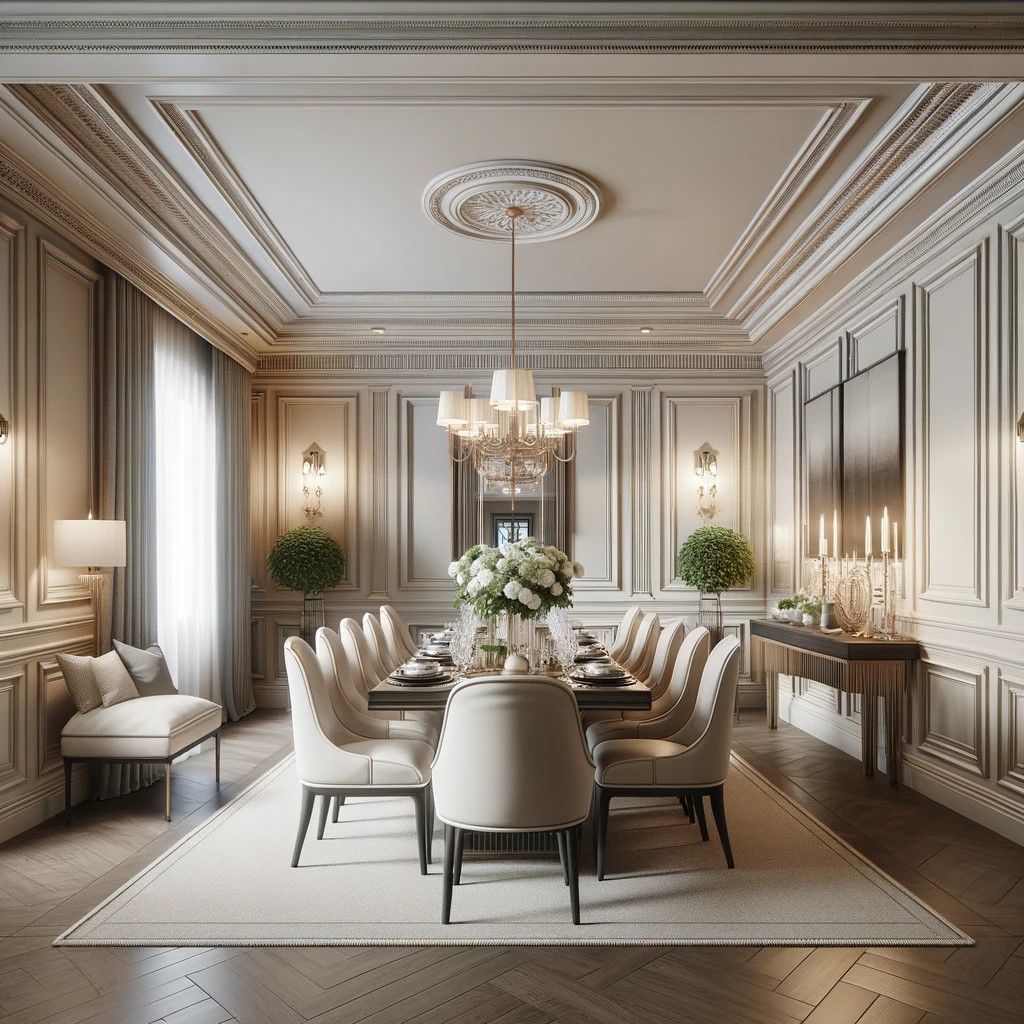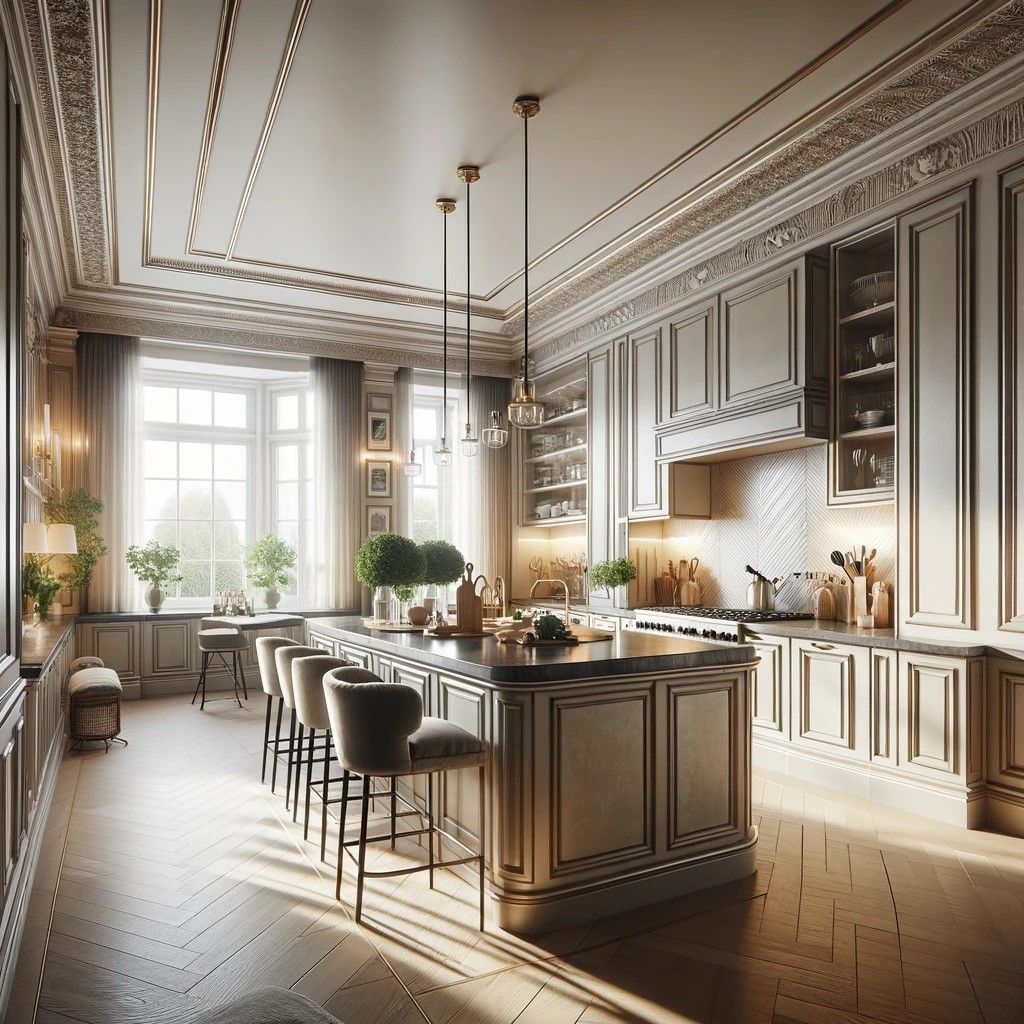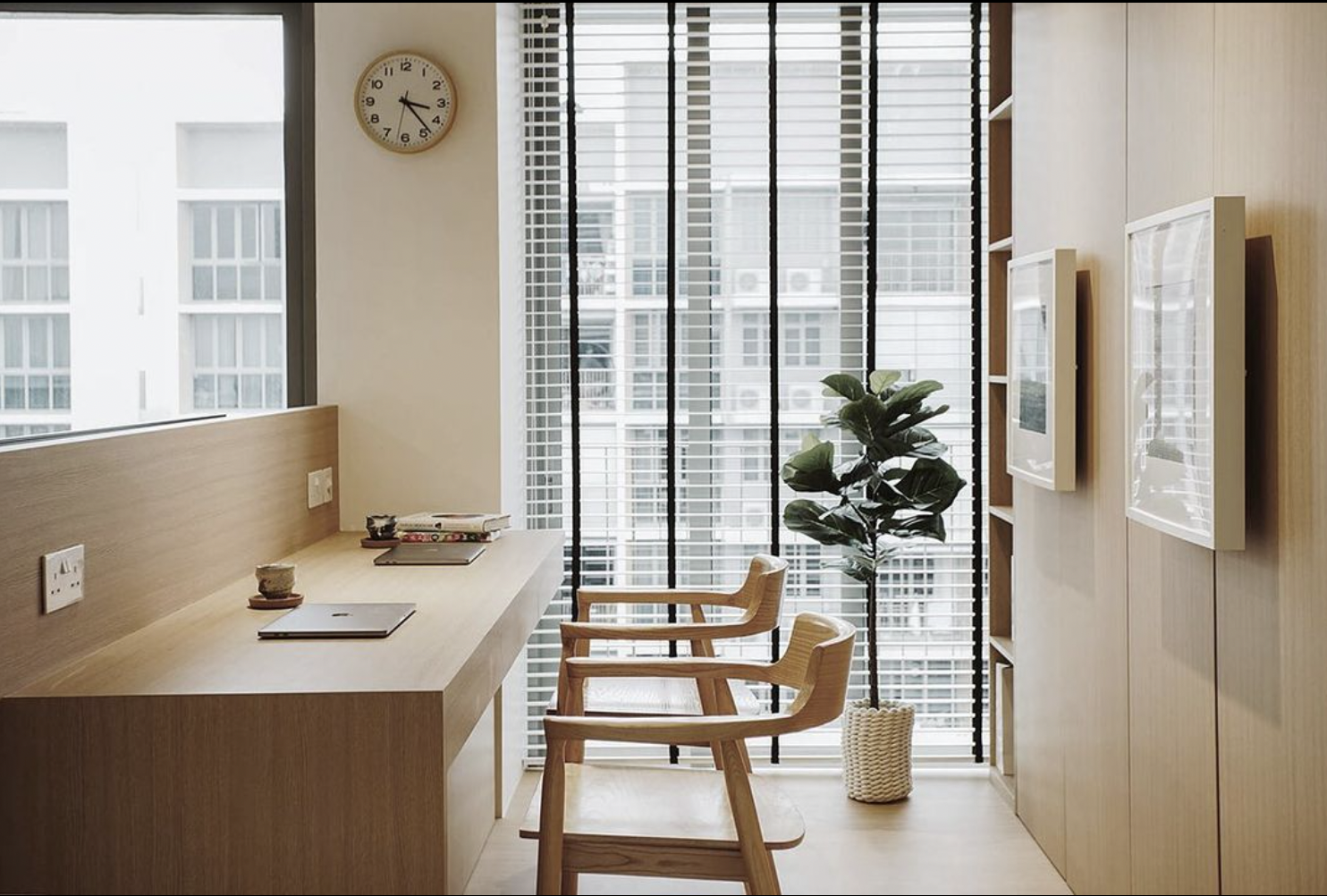By Adam Pencraft, 13th March 2024
The Artistry of Wainscoting
In the dynamic world of interior design, few elements embody timeless elegance and architectural finesse like wainscoting. From transforming mundane walls to creating a sophisticated atmosphere, wainscoting has long been a hallmark of classic design. Let's embark on a journey through the nuances of wainscoting, exploring its various styles, installation methods, and the visual poetry it adds to different spaces.
Understanding Wainscoting
Wainscoting Defined
Wainscoting, a term derived from the Middle Low German word "wagenschot," refers to the wooden panelling that adorns the lower portion of interior walls. This decorative wall treatment not only adds visual interest but also serves as a protective layer against the wear and tear of daily life.
Wainscoting Styles
The world of wainscoting offers a rich tapestry of styles, each with its unique charm. From the timeless raised panel wainscoting that exudes sophistication to the charming beadboard wainscoting that brings a cosy feel to any room, there's a style to suit every design preference. Additionally, shaker panels, flat panels, and traditional types offer versatility in achieving distinct aesthetic vibes in laundry room.
Dining Room Elegance

One of the most captivating spaces to introduce wainscoting is the dining room. The formal dining room, adorned with raised paneling and wainscoting, not only emanates a traditional feel but also adds a touch of grandeur to gatherings. The chair rail, installed along the wainscoting, serves as a visual divide, enhancing the overall design.
Installation Insights
Installing wainscoting can be a transformative DIY project or a task best left to professionals, depending on your comfort level. The installation process involves attaching wood panels or beadboard directly to the interior wall. Raised panels, a hallmark of traditional type of classic design, can be added for a more intricate and luxurious look.
Visual Impact
The beauty of wainscoting lies in its ability to enhance the visual appeal of any room. The individual panels, whether raised or flat, add texture and character to a bare wall. The strategic placement of chair rails and mouldings around individual panel further elevates the aesthetic, creating a cohesive and harmonious design.
Cosy Spaces

Incorporating wainscoting in various rooms, such as the dining room or bathroom, can instantly create a cosy atmosphere. The beadboard wainscoting, painted in warm tones, adds a touch of nostalgia to period homes while maintaining a fresh and inviting look.
Wainscoting Styles Unveiled
Raised Panel Wainscoting:
The epitome of elegance, raised panel wainscoting, features panels that are elevated from the wall surface. This style, reminiscent of traditional architecture, adds a sense of grandeur to formal spaces. The raised panels, often framed with intricate mouldings, contribute to a luxurious and timeless ambience.
Flat Panel Wainscoting:
For those seeking a more contemporary look, flat panel wainscoting is a perfect choice. With sleek, unembellished panels that sit flush against the wall, this style exudes simplicity and modernity. Flat panel wainscoting is versatile, seamlessly blending into various design styles.
Beadboard Wainscoting:
Beadboard wainscoting is a popular choice for those aiming to infuse decor of a room with charm and character. The distinctive vertical grooves of beadboard panels not only add visual interest but also create a delightful play of light and shadow. This style is particularly well-suited for achieving a cosy, cottage-inspired feel.
Installation and Design Considerations
Professional Touch
While DIY enthusiasts may embark on installing wainscoting themselves, a professional installation ensures precision and a flawless finish. The expertise of a seasoned installer can elevate the overall impact of wainscoting, especially in formal dining rooms or high-traffic areas.
Materials Matter
Choosing the right materials is paramount to the success of any wainscoting project. Solid wood panels, medium-density fiberboard (MDF), and plywood are popular choices. Solid wood exudes a timeless quality, while MDF offers a more budget-friendly option without compromising on aesthetics.
Colour Harmony
The choice of paint colours plays a pivotal role in the overall design impact of wainscoting. Opting for the very same color for both the wainscoting and the upper wall creates a cohesive look, allowing the wainscoting to seamlessly blend into the room's design. However, exploring contrasting colours can also add a dramatic flair.
Space Dynamics
Wainscoting isn't confined to formal dining rooms; it can enhance the ambience of various spaces, including bathrooms and laundry rooms. The addition of wainscoting in these areas adds a layer of sophistication while providing a practical solution to cover lower portions of walls.
Individual Expression
Wainscoting allows for individual expression in design. Experimenting with wainscoting ideas, such as raised panels or incorporating a window seat, brings a unique touch to the space. The versatility of wainscoting makes it an ideal design element for those looking to infuse their personality design style into their living spaces.
The Future of Wainscoting in Interior Design

As we navigate the evolving landscape of interior design, wainscoting remains a steadfast symbol of timeless elegance. From raised panels to flat panel styles, the adaptability of wainscoting ensures its relevance in both traditional and modern house design aesthetics.
The Practical Side of Wainscoting
In the second part of our exploration into the world of wainscoting, we'll delve into the practical aspects of this design element. From its impact on insulation to the variety of materials used, wainscoting goes beyond aesthetics to offer functional benefits and a tactile richness to interior spaces.
The Practical Side of Wainscoting
Insulation Enhancement
Wainscoting does more than add visual interest; it can also contribute to energy efficiency. Adding insulation behind wainscoting panels helps regulate indoor temperatures, making rooms more cozy feel comfortable while potentially reducing energy costs.
Material Choices
The material used in wainscoting not only affects its visual appeal but also influences its durability and maintenance. Medium-density fiberboard (MDF), known for its smooth surface, is a popular choice for achieving a sleek look. Solid wood panels, on the other hand, bring a natural and authentic feel to the space.
Trim and Molding
The inclusion of several styles of trim and moulding in wainscoting design serves both aesthetic and practical purposes. Chair rails not only add visual interest but also protect walls from potential damage caused by furniture bumps. Additionally, mouldings can enhance the overall design by creating defined lines and architectural details.
Space Utilization

Wainscoting can be strategically used to define spaces within a room. For instance, in a dining room, the lower portion covered by wainscoting creates a sense of intimacy and delineates the dining area. This clever use of wainscoting contributes to a well-organized and visually appealing space.
Paint and Maintenance
Choosing the right paint for wainscoting is crucial for longevity and ease of maintenance. High-quality paint not only enhances the visual appeal but also protects the wood from wear and tear. Regular maintenance, such as cleaning and touch-ups, ensures that wainscoting retains its pristine appearance over time.
Wainscoting Beyond Aesthetics
Historical Significance
Wainscoting has a rich history, dating back to the 16th century. Initially used to cover damp or cold walls in stone and brick houses, wainscoting has evolved into a design element that adds character and charm to interior spaces. Its enduring popularity speaks to its timeless appeal.
Versatility in Design
Wainscoting's versatility extends beyond traditional styles. From beadboard wainscoting in bathrooms to flat wall paneling and wainscoting in modern living rooms, the adaptability of this design element allows it to seamlessly integrate into various design styles, enhancing the character of any space.
Adding Character to Walls
Wainscoting serves as more than a decorative element; it adds character and personality to walls. Whether covering an entire wall or just the lower portion, wainscoting transforms a blank canvas into a visual masterpiece. This design approach allows homeowners to create truly unique and personalized spaces.
Practical Benefits
In addition to its aesthetic appeal, wainscoting offers practical benefits. It serves as a protective barrier for walls, especially in high-traffic areas prone to scuffing or damage. The lower portion covered by wainscoting also provides an opportunity to experiment with bold colours or intricate patterns without overwhelming the entire room.
Wainscoting as a Design Essential
In conclusion, wainscoting stands as a design essential that seamlessly blends aesthetics with functionality. From its historical roots to its modern-day versatility, wainscoting continues to captivate homeowners, designers, and enthusiasts alike. Whether opting for the classic elegance of raised wood paneling and wainscoting or the sleek simplicity of flat panel styles, the enduring allure of wainscoting remains undeniably timeless. As we navigate the ever-changing landscape of interior design, wainscoting stands as a testament to the enduring appeal of craftsmanship, tradition, and the artistry of transforming walls into works of design excellence.
Intrigued by the sophisticated allure of wainscoting in interior design? Reach out to us at Sunnyside, where we excel in connecting clients with leading interior designers in Singapore, eager to infuse your living spaces with refined elegance. Uncover additional articles and insights on interior design by visiting our website, the go-to place for those looking to enhance their home interiors. Engage with our lively community on Instagram and Facebook, where we share a daily stream of inspiration and practical design advice.
Also, make sure to subscribe to our YouTube channel, Sunny Design Visions, for a visually engaging journey into the world of interior design, offering you a closer look at how style and functionality can coexist beautifully in your home.
About the author
Adam Pencraft is a lifestyle writer with a focus on the latest developments in interior design, fashion, and wellness. He loves making complex topics accessible to a broad audience. When he's not crafting compelling articles, Adam enjoys his time on the golf course and exploring the dynamic world of video games.
FAQ
What is the purpose of wainscoting?
Wainscoting serves both a decorative and functional purpose. Aesthetically, it adds character, texture, and depth to interior walls, enhancing the overall design of a room. From a practical standpoint, wainscoting acts as a protective layer for walls, guarding against scuffs, dings, and wear from daily use. It also has historical roots as a means to provide insulation in colder climates.
What is the difference between wainscoting and paneling?
While both wainscoting and paneling involve the application of woodwork to walls, they differ mainly in their placement and purpose. Wainscoting specifically refers to wooden panels that cover the lower part of an interior wall, typically up to chair rail height. Paneling, on the other hand, can cover the entire wall, from floor to ceiling, and doesn't necessarily include the framing or trim often associated with wainscoting designs.
What is the effect of wainscoting?
The effect of wainscoting on a space can be transformative, introducing a layer of elegance, warmth, or historical charm, depending on the style chosen. It can make large rooms feel more intimate, add interest to plain walls, and elevate the overall aesthetic of a home. Wainscoting can also create a visual division in open-plan spaces, defining areas without the need for physical barriers.
Is wainscoting trim?
Wainscoting is not simply trim; rather, it is a comprehensive wall treatment that can include trim as one of its components. The term 'wainscoting' encompasses the panels, boards, or beadboard installed on the lower part of a wall, while 'trim' refers to the mouldings used to frame and finish the edges of the wainscoting, such as baseboards, chair rails, and picture rails. Trim enhances the visual appeal of the wainscoting and provides a polished look to the installation.



